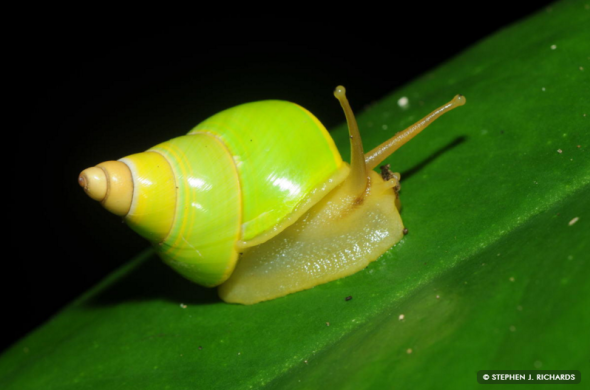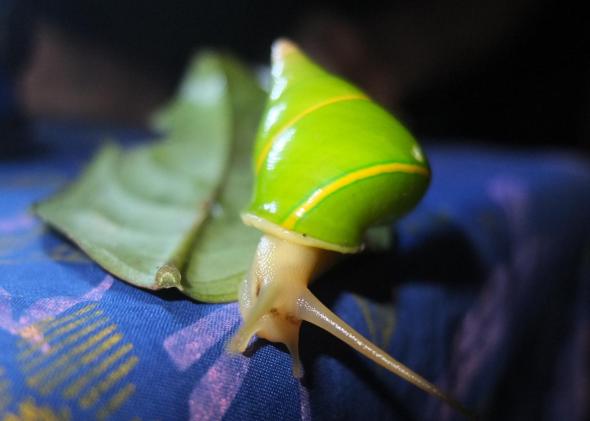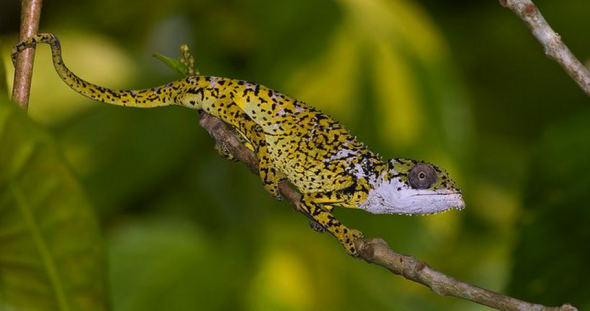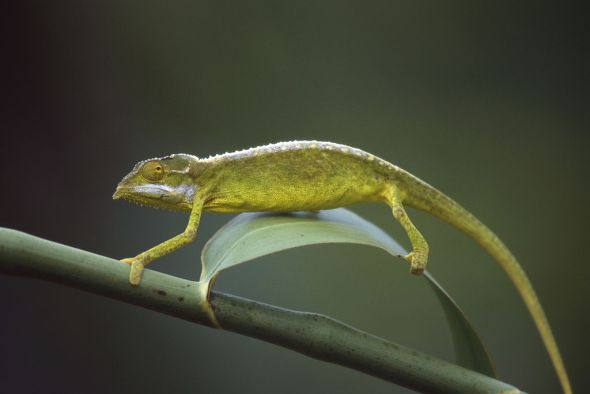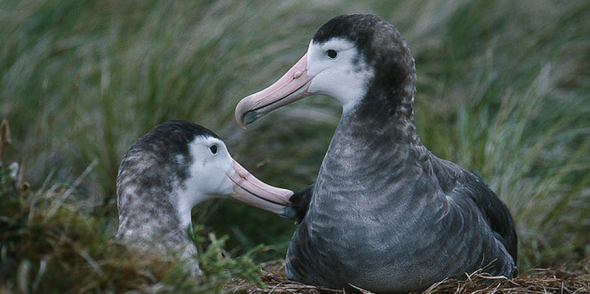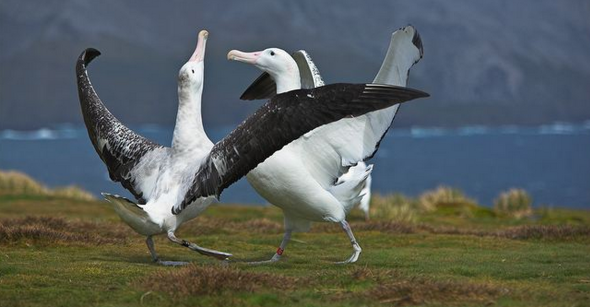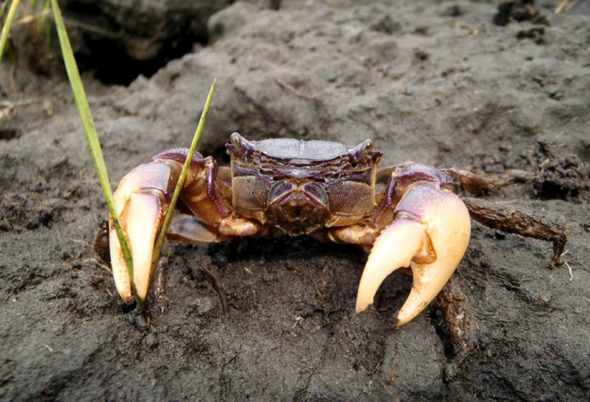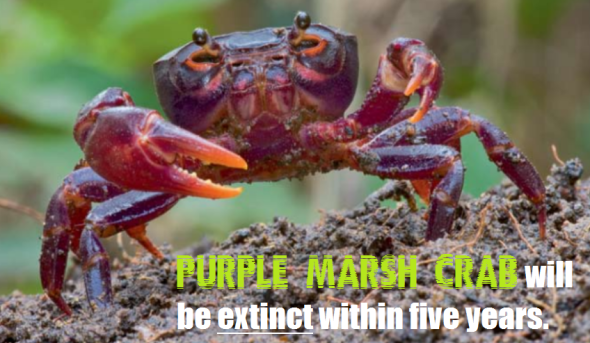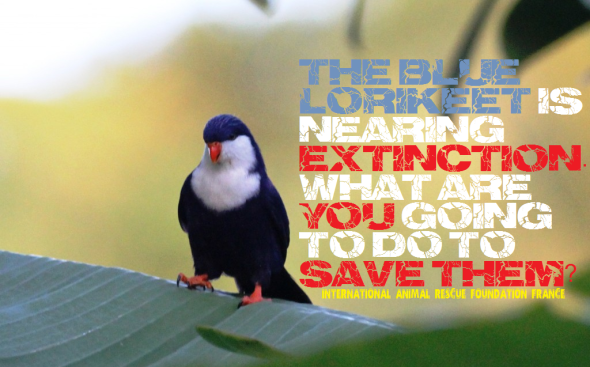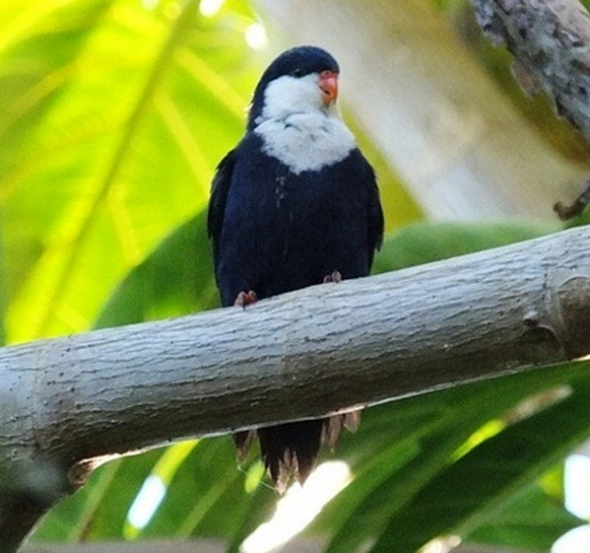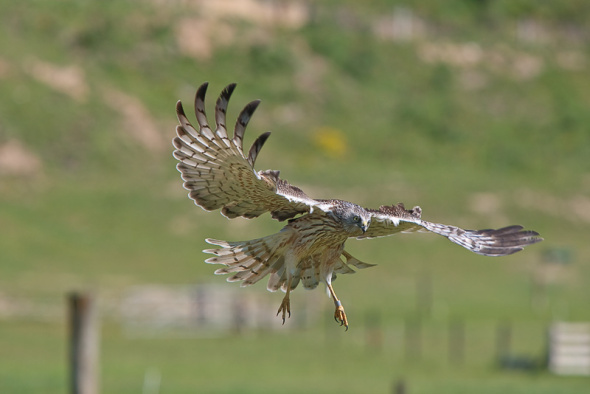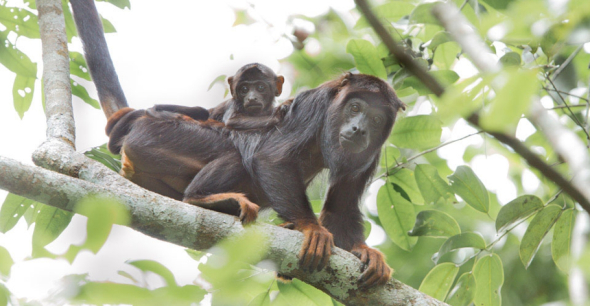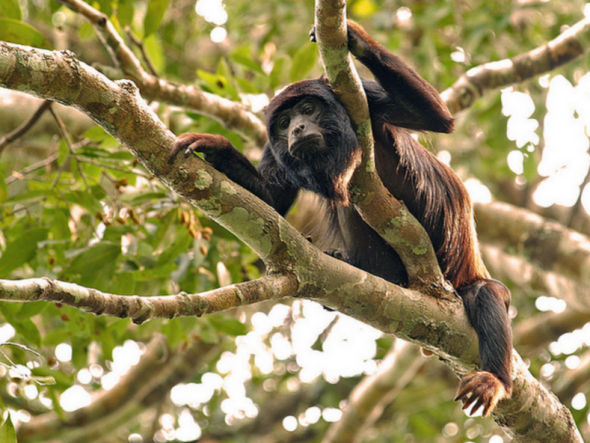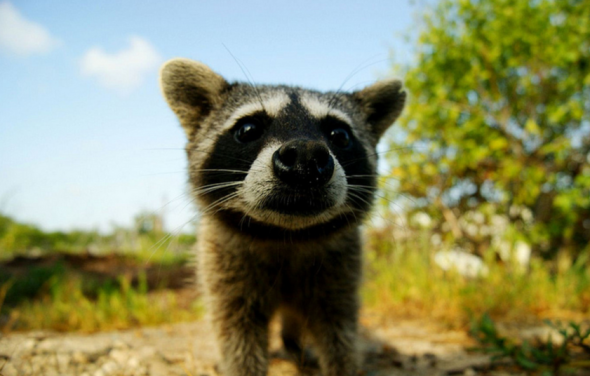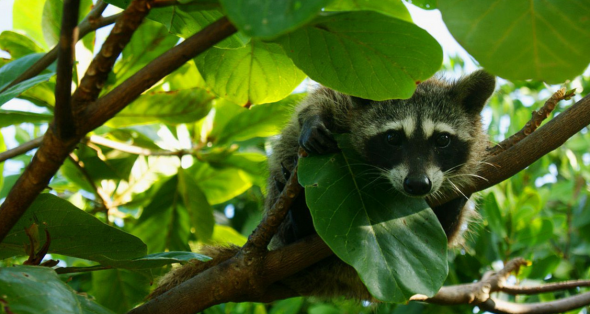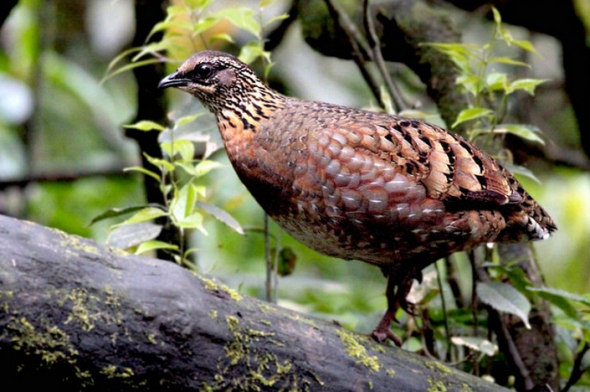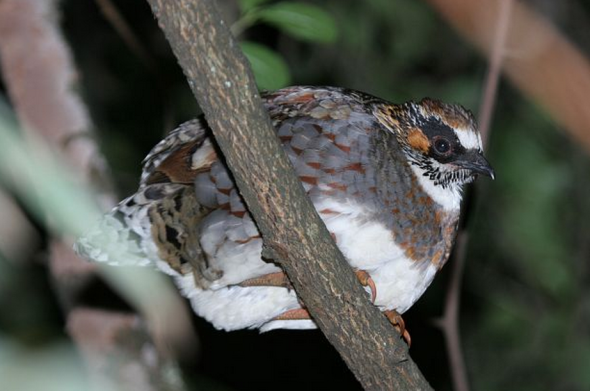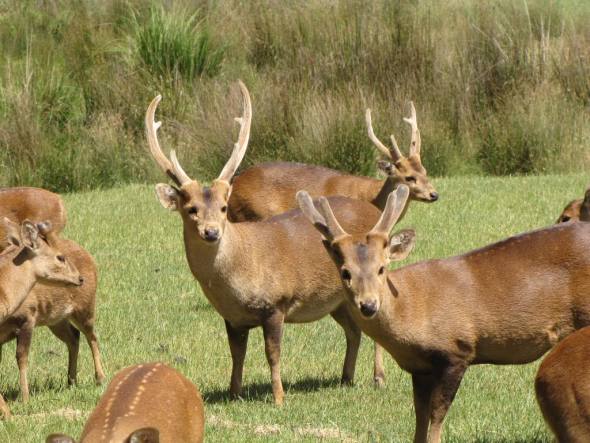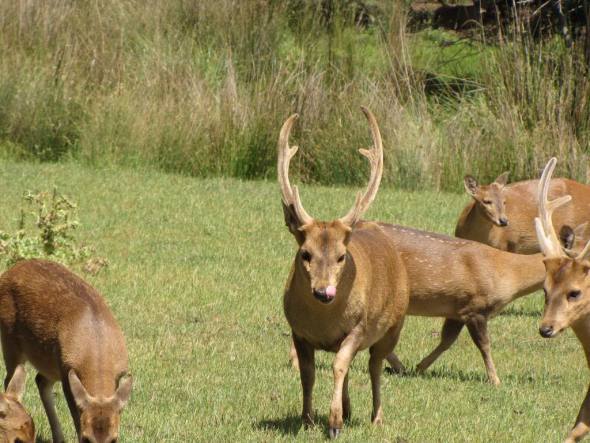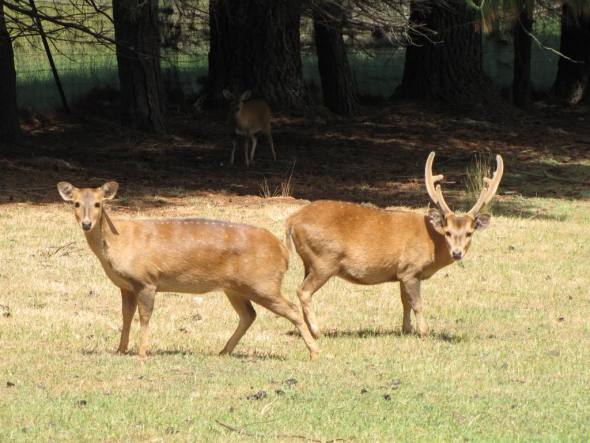THE BIRDS | WHAT ARE THEY TRYING TO TELL US?
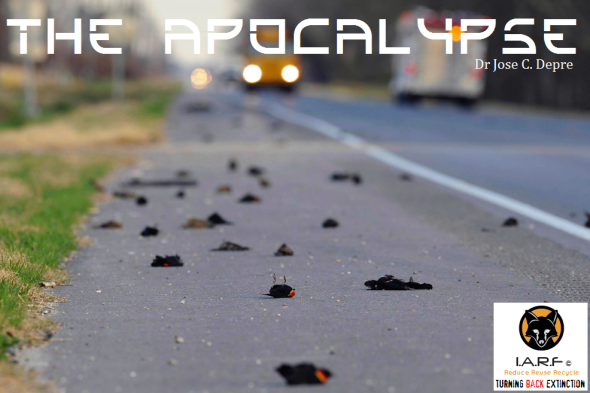
THE APOCALYPSE | WHAT ARE THEY TRYING TO TELL US?
Apocalypse
əˈpɒkəlɪps (Greek/Latin)
Noun: the Apocalypse: The complete final destruction of the world, as described in the biblical book of Revelation. “the bell’s ringing is supposed to usher in the Apocalypse”. An event involving destruction or damage on a catastrophic scale.
Zephaniah 3:8
“Therefore wait for Me,” declares the LORD, “For the day when I rise up as a witness Indeed, My decision is to gather nations, To assemble kingdoms, To pour out on them My indignation, All My burning anger; For all the earth will be devoured By the fire of My zeal.
Two days ago I wrote a brief extract in relation to some 1,300 birds assessed by the International Union for the Conservation of Nature (IUCN) Red List that scientists have predicted will be extinct come 2080. Many of these extinctions will be caused by habitat destruction, persecution, poaching, pet trade, lack of prey for birds to feed on, down to declining nesting areas destroyed by (increasing human population around the globe). These threats are what we know about, they are also documented within many articles I and third (non-related) organisations write about too.
However since the 1980’s scientists have been in a way trying to understand why birds die for en masse. Birds like many other animals don’t just die for no reason. Birds don’t decide to wake up one morning, then a few hours later commit suicide by hurtling to the ground at over 60mph thus dying instantly. Environmentalists from International Animal Rescue Foundation America have been documenting since 2010-2016 mass bird deaths around the globe.
Five days ago a meeting took place in NYC involving US - I.A.R.F environmentalists, bird watch groups in America, and nine scientists from Detroit and New York. This meeting was different from what we’d been planning; meaning we needed to get to the bottom of what was causing mass bird deaths around the globe, and were these deaths telling us something?. These deaths were not just as a result of habitat destruction, deforestation, human population increasing, industrialization, poaching or indiscriminate killing.
These deaths were caused as a result of something more sinister, a human problem maybe, something within the air, toxic pollution, aircraft noise, or as many scientists continue to bleat to the public “El Nino weather disturbances”?. The fact of the matter is, no scientist or governmental science group has yet established why so many birds are dropping from the skies, killing themselves, falling over dead, or as explained above flying into the ground at break next speed. The situation is so concerning that many environmental groups are now demanding answers from their local environmental governmental examiners. And as you may guess, El Nino has used as a silencing tool once again.
On Tuesday (03.08.2016) I contacted the Meteorological Office in Devon, Great Britain for more information with regards to what scientists have been stating from 2014-2016 are “El Nino events”. I myself didn’t 100% believe that we we’re going through an prolonged El Nino event. So in order for me to verify my concerns I had to speak to climatologists that were more clued up on this weather phenomenon than I was, and as I suspected, there hasn’t been as yet a “recorded El Nino event from the years of 2014-2016”, interesting!
El Nino:
“An irregularly occurring and complex series of climatic changes affecting the equatorial Pacific region and beyond every few years, characterized by the appearance of unusually warm, nutrient-poor water off northern Peru and Ecuador, typically in late December. The effects of El Niño include reversal of wind patterns across the Pacific, drought in Australasia, and unseasonal heavy rain in South America”
However even if an El Nino event was occurring, when I explained my concerns to the Devon board of climatologists they also agreed with me that birds don’t just drop from the skies, or suddenly die due to an El Nino event. Furthermore they also agreed with me; should any scientist use this weather event to explain why (100, 1000 or 10,000 birds just all of a sudden die), then them scientists are basically trying to keep the public calm. Interesting yet again.
Mass Bird Deaths:
The following information below relates to all recorded mass bird deaths around the globe from January 2016 to 28th July 2016. Avian bird flue deaths have been excluded from this report. Every single bird death listed hereto is unexplained. Avian influenza deaths have been excluded because the cause of death is known.
28th July 2016 - 300 sea birds have washed up dead since May in Washington State, America. 15th July 2016 - 3,500 ducks found dead along the river Palar in India. 14th July 2016 - Large number of sea birds washing up dead is ‘alarming’ in Victoria, Canada. 28th June 2016 - Hundreds of dead birds washing up along lake Erie in New York, America. 23rd June 2016 - Hundreds of dead birds found in fields ‘due to pesticides’ in Chandrapur, India. 2nd June 2016 - Large number of dead birds being found, ‘a mystery’ in Martins Ferry, Ohio, America. 10th May 2016 - Hundreds of snow geese found dead in Idaho, America.
9th May 2016 - 9,000 birds killed by huge hailstorm in Utah, America???. 9th May 2016 - 100 dead sea birds found washed up on beaches in El Tabito and Matanzas, Chile. 8th April 2016 - Dozens of dead birds found along a road in Fairfax County, Virginia, America. 7th April 2016 - 5,000 birds killed by storm in Jessore, Bangladesh???. 29th March 2016 - 100 dead birds found along I-5 in Redding, California, America. 22nd March 2016 - Dozens of dead birds found along a road in Elmira, New York, America. 16th March 2016 - Hundreds of dead crows found near Battle Creek in Michigan, America. 16th March 2016 - UPDATE: sea bird die off now up to 36,000 in Alaska, America. 4th March 2016 - Large number of dead sea birds washing up on beaches in Volusia, Florida, America. 26th February 2016 - 800 dead ducks removed from reservoirs in Caceres, Spain. 21st February 2016 - Dozens of dead birds found along a highway in Ohio, America. 18th February 2016 - Hundreds of dead sea birds found washed up in Trujillo, Peru.
18th February 2016 - Hundreds of birds fall dead from sky in Odessa, Ukraine???. 13th February 2016 - MASSIVE - 150,000 penguins die after giant iceberg becomes grounded in Antarctica. 10th February 2016 - Dozens of dead sea birds, plus other marine creatures found on a beach in Malibu, America. 4th February 2016 - Dozens of birds suddenly die in Wichita, Kansas, America. 4th February 2016 - Dozens of Pelicans dying, reason unknown on Grand Isle, Louisiana, America. 28th January 2016 - 22,000+ sea birds found dead, ‘biggest die off ever recorded’, along beaches Dead birds in alaskain Alaska, America. 28th January 2016 - Hundreds of sea birds found dead on a beach on Sea of Galilee, Israel. 25th January 2016 - Thousands of chickens killed by ‘mysterious disease’ in Kampong Thom, Cambodia. 6th January 2016 - Hundreds of dead birds found in Cueramaro, Mexico.
The report above is more than concerning, its actually horrifying. Fortunately many people have also sent to us videos and uploaded videos onto YouTube that clearly show (El Nino) is not to blame. Take a look at the video below, and explain to us how El Nino was responsible for these mass bird ‘suicide deaths’? The 2012 video report states:
“More than 100 birds — perhaps as many as 300, according to an eyewitness — were found Dec. 30, 2012, on and around Boyds Creek Road in Seymour, Tenn. While many of the birds were actually on the road, dozens more were found in a nearby field. As far as 60 yards away, individual birds, believed to be starlings, were found”…
Seymour, Tenn is located within the United States (Seymour, Tennessee). We did search through weather events relating to this video. On the day it was uploaded and from the sketchy media reports there were no freak weather occurrences, heavy rains, hail storms, tornadoes or anything to provide a reasonable explanation as to why so many starlings just all of a sudden died. Yet in few reports El Nino was blamed?
The report above (bird deaths) provides much startling data in relation to the Unites States too. From the start of January 2016 to July 28th 2016 most of the bird deaths recorded above are actually occurring within the United States. Furthermore we also have the so called “experts” that are providing their theories as to why so many birds are dying; in their own words “it only really happens once or twice every few years”. That’s absolute nonsense.
From 2005 a third party organisation aligned to I.A.R.F.A has been recording (and continues to record) mass bird deaths every year, and its not just one species neither. The video below touches up on everything that we already known about. Yet, it fails to touch up on what many of you don’t know. Watch the video please. as it does provide some proof, however the author is not projecting the real true story here as to why so many birds are dying.
“SO WHAT’S CAUSING THESE MASS DEATHS?”
Well firstly not everything is attributed to climate change, habitat destruction, or localized pollution. The author of the video above also seems to forget that America is not the only country that hosts millions of birds. For example he states that a mass die off of birds in Arkansas was caused by fireworks? While there may indeed be some truth to this theory, do we see the same mass bird die offs in England on Guy Fawkes night, Burns Night in Scotland, Chinese New Year, or Diwali? well the answer is, no we don’t. If we did we’d most certainly be documenting about it, and doing something to stop these events from harming our fauna.
From the tropics to the pole some of the worst bird declines and mass deaths are being witnessed within Africa, and Asia. North America’s bird populations “needed to keep the planets food crops in tact” are also declining to worrying levels never seen before. Vultures, raptors, eagles, swifts, swallows, colonies of sea birds, murres, puffins, down to shorebirds are all declining rapidly. Red knots in the Western Hemisphere are also vanishing ever so quickly. Sandpipers. spoonbills, pelicans, storks are among some of the migratory birds declining too.
BIRDS AND BIOCHEMISTRY
Today birds are telling us about new threats to the environment and potentially to human health in the coded language of biochemistry. Through analysis of the inner workings of birds’ cells, scientists have been deciphering increasingly urgent signals from ecosystems around the world. Like the fabled canaries that miners once thrust into coal mines to check for poisonous gases, birds provide the starkest clues in the animal kingdom about whether humans, too, may be harmed by toxic substances.
No birds to warn us = a threat to humans. And they prophesy what might happen to us as the load of carbon-based, planet-warming gases in the atmosphere and oceans climbs ever higher. Birds are the planets warning meters of danger, just as dogs warn us that intruders are nearing our property, and frogs inform us that the local rivers, ponds, and meadows have been polluted. Each species informs us of something.
Birds like rodents and amphibious creatures provide to us via their biochemistry coding, clues, and answers as to what is going on within the environment they are living in, and why they died. Birds that drop out of the sky during a (morning firework display)? that were allegedly scared would then show to scientists via their bloods, stress hormone changes. Neither of the birds in the United States that died as a result of fireworks - died as a result of fireworks, furthermore there is no PME evidence to back these claims up, just hearsay.
Dr Rachel Carson was the earliest and best known scientist to link the fate of birds to that of humans. Alerted by reports of sharp declines in birds of prey and songbirds, she began to examine the effects of the pesticide DDT. It was the first modern synthetic pesticide, in wide use after World War II to control mosquitoes and other insects. Her book Silent Spring, published in 1962—the title echoes the poet John Keats’s celebrated line “And no birds sing”—explained that DDT moved up through food chains, from the insects it was designed to kill to the creatures that ate them. It accumulated inexorably in tissues, organs, and fat in top predators such as peregrine falcons, ospreys, bald eagles, and pelicans.
By 1972, after public uproar, DDT was banned in the United States and eventually banned around the world except in malaria-prone countries, mostly in Africa. While DDT has indeed been taken out of service - there are other chemicals that are entering the food chain - and its birds like frogs and toads, newts and other amphibians that inform us when threats to humans are increasing due to chemicals making their way into or next to the food chain.
Interestingly - since the 1970’s DDT was banned right? Well just to give you an example of how powerful these chemicals are, and what threats they pose to human health, why not look up why songbirds are still dropping dead in St Louis, Michigan, next to an old chemical plant! So birds are still informing us that despite bans in place, and these chemicals are no longer being used, there are still threats to both humans and other animals from chemical residues. Eventually that factory will be demolished, but only because birds have told us in relation to PME tests on their carcasses.
Studies on birds exposed to chemicals from the 1980’s (onwards) have also shown us how these chemicals are altering human hormones and even cell changes. Causing cancers and other diseases and illnesses. More “human health scientists” are taking note of birds for clues or answers relating to why humans are falling ill, or dying. Take a look at how we found where the Ebola virus originated from in West Africa during the last outbreak, a single bat species. Today scientists can capture birds, test them, band them, let them go, and then catch them years later to see what’s changed in relation to “environmental chemical threats”. Birds also normally maintain relatively stable numbers, unlike small mammals. So when their populations take a dive, it means something noteworthy is going on.
“THAT’S WHAT BIRDS ARE TELLING US”
So as I have explained above, birds don’t just drop out of the sky for the sheer fun of it, and yes there are a wide number of problems such as habitat destruction, environmental disturbances, but more importantly - (pollution). Pollution has been linked to 90% of all bird deaths listed above from January to July 2016.

Image: Dead robin - St Louis, Michigan
The dead robin pictured above explained to scientists (via avian coding biochemistry) that the old disused chemical plant these birds and others nest and live next to was the primary cause for their death. Read more below:
http://www.environmentalhealthnews.org/ehs/news/2014/aug/michigan-ddt-cleanup Although its rather sad and unfortunate these birds died. They eventually told scientists via coding biochemistry why they died, and that has since provoked experts to now order the destruction of this old disused chemical plant, that was also causing serious health problems in humans living next to the chemical plant.
So when we begin to see mass bird deaths as explained above, these deaths must not be ignored. While the birds themselves aren’t singing to us that there is indeed a problem, their death[s] are indeed explaining to us that something isn’t quite right within the environment. The video below PROVES why we humans must ensure that our bird life populations around the globe are protected.
Failing this chemicals and toxins that are are not as yet harmful to us, but are to birds will eventually wreak havoc among the human and animal world. DDT was banned decades ago, yet its still causing illnesses, cancers, and mass bird deaths in America and around the globe.
“So when bird populations take a dive, it usually means something noteworthy is going on”
I find it quite alarming that within the past five years the large number of bird deaths at sea, and inland around the planet has simply been ignored, shrugged aside or scientists have basically given a half ass answer as to why they died.
SOMETHING IN THE AMERICAN AIR?
Following Britain’s Clean Air Act of 1956, it was reported that several species of birds returned to London. In 1986, Mexico City’s air pollution levels were so severe that various news sources reported birds falling from the sky in droves. In 2013, particulate matter from nearby forest fires shrouded Singapore so completely that locals found dead birds near their homes.
Now lets take a look at a handful OF UNITED STATES BIRD DEATHS, DEATHS THAT HAVE BEEN TELLING SCIENTISTS THAT SOMETHING ISN’T QUITE RIGHT:
- 9th May 2016 - 9,000 birds killed by huge hailstorm in Utah, America???
- Dozens of dead birds found along a road in Fairfax County, Virginia, America. 7th April 2016
- March 2016 - 100 dead birds found along I-5 in Redding, California, America
- Dozens of dead birds found along a road in Elmira, New York, America
- 16th March 2016 - Hundreds of dead crows found near Battle Creek in Michigan, America
- 4th February 2016 - Dozens of birds suddenly die in Wichita, Kansas, America
“Mexico City’s air pollution levels were so severe that various news sources reported birds falling from the sky in droves”
If this article doesn’t concern you then ignore it, move on, and do not question it. I.A.R.F documents every year on mass animal deaths, these deaths are all recorded, and then investigated. Finally, North and South American bird population are declining to worrying levels. As you can see above the report in relation to LONDON and MEXICO resulted in actions being taken to preserve life.
However - take our two winged friends away, and you’ve a whole lot of nasties to contend with.
“OPEN YOUR EYES”
Dr Jose C. Depre.
PhD. MEnvSc. BSc(Hons) Botany, PhD(NeuroSci) D.V.M. Environmental & Human Science
Endangered Species Monday: Papustyla pulcherrima | Special Report.
Endangered Species Monday: Papustyla pulcherrima
Manus Green Tree Snail - Very first invertebrate to be listed on the Endangered Species Act of the United States of America (2015) Endangered Species Post Special Report.
This Monday’s Endangered Species Post (ESP) I take a wee glimpse into the life of the Green Tree Snail, also commonly known by Papua New Guinea’s natives as the Manus Green Tree Snail. Image Credit: Stephen J. Richards.
Identified by Professor Rensch 1931, Rensch was born on the 21st January 1900 in Thale in Harz and died on the 4th April 1990 in Münster, (Germany), Professor Rensch was an evolutionary biologist, zoologist, ethologist, neurophysiologist and philosopher and co-founder of the synthetic theory of evolution. He was professor of Zoology and Director of the Zoological Institute at the Westphalian Wilhelms University in Münster. Together with his wife Mme Ilse Rensch he also worked in the field of Malacology and described several new species and subspecies of land snails.
The Manus Green Tree Snail is identified as Papustyla pulcherrima commonly known as the Emerald Green Snail. From 1983-1994 this particular species of snail was considered (extremely rare). Back in 1996 when scientists managed to again finally catch up with this stunning little mollusk, the species was then listed as (data deficient) of which to date there remains little information about this (rare) but beautiful snail.
P. pulcherrima is endemic to the Papa New Guinea northern island of Manus of which the species is listed as (near threatened), and has also been reported on the adjacent Los Negros Island. Environmental scientists have confirmed from villagers on the main Manus Island that the species is not located anywhere else. However there are some sketchy reports that the species “may be located on surrounding islands”, however there is no evidence to back these claims up.
Environmental scientists have confirmed for now that the species is located in only 12-13 areas of the Manus Island[s]. Further reports have confirmed that mature individuals are on the decline (which if not controlled could evidently see the species re-listed as vulnerable or endangered). The Manus Green Tree Snail is not believed to be living within fragmented zones. The species is restricted to forest and low intensity garden ‘type’ habitat. Declines have been noted within all 12-13 identified habitats on the Manus Island and adjacent Los Negros Islands. Population history is pretty much undocumented although has been shown to be slowly declining.
Image: Manus Green Tree Snail.
Back in 1930 when Professor Rensch identified the Manus Green Tree Snail, locals soon began collecting the species for trade thus seeing the mollusk now nearing endangered listing. Demand for the Manus Green Tree Snail has now drastically increased threatening the species furthermore. Locals continue to collect this rather unusual colored species shell for use within the jewelry trade. There are now “very serious concerns” that trade may eventually push the species into extinction.
Due to mass trade exploitation the Manus Green Tree Snail is the very first invertebrate to be listed on the Endangered Species Act of the United States of America. International trade has been controlled by export permit since 1975 under the Convention on International Trade in Endangered Species of Wild Fauna and Flora (CITES) appendix II. Unfortunately this is not stopping locals from harvesting the species, and trade is still continuing despite it now a criminal offence under United States and some international laws.
“Overexploitation threatens the Manus Snail”
Market sales data collected from the Lorengau market, over a six day period suggest that annual sales at the market may approach 5,000 shells. Investigations by the Wildlife Conservation Society (WCS) reveal that large quantities of shells are still being attempted to be exported out of the country. Online searches revealed the sale of the shells, often marketed as antiques, occurring in open forums and internet market places based in New Zealand, Australia, and the United States of America (USA). International Animal Rescue Foundation has ran numerous traces online of which located yet again Ebay as being a number one trading site of the “threatened species”, please view the image below and click the image link that’ll direct you to that site.
“EBAY JAPAN IS A HOTBED FOR ILLEGAL TRADE OF THE MANUS GREEN SNAIL”
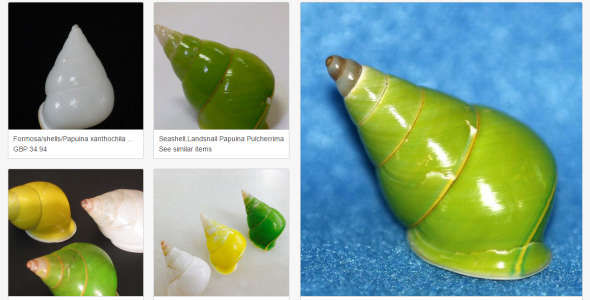
International Animal Rescue Foundation’s External Affairs Department and the Environmental Cyber Crimes Unit located many a sites trading the Manus Green Tree Snail’s shell which is illegal under some trade law, unfortunately the Ebay site listed above, located within Japan is one of many more that are trading (despite the species nearing extinction).
I.A.R.F’s Environmental Cyber Crimes Unit have since filed a complaint with Ebay, providing all the relevant data to now remove these species from their sites, however its likely to prove negative as the trader could very well state they harvested or purchased the shells before international laws were drafted. Furthermore a trace of the owner that owns this site above which is in violation of the United States and Cites laws (is located within the United States). So in regards to enforcement, breaking this link is going to be somewhat of a tough cookie. Further trade was witnessed here via what we can only believe is alleged “antiques”.
Further trade all of which is illegal has been recorded hereto - this site linked back to a Mr Rob West of 121 Henderson Road, Sheldon, Brisbane, Queensland 4157 Australia, Telephone: 610732061636. Mr West from Brisbane categorically states that he doesn’t own a shop, and is a one man band, yet clearly this link states otherwise. Further evidence revealed antique trade conducted on the Ebay site, see in the image below (illegal under United States law).
Click the image link below to view more.

“Illegal to trade under the Endangered Species Act of the United States of America”
The environmental wildlife crimes investigation team linked to TRAFFIC and Cites stated:
It is possible the avoidance of conventional nomenclature is an attempt to avoid detection by authorities. In some cases, sellers on internet market places were based in CITES signatory countries (including: Australia, Italy, New Zealand, Singapore and USA) while others were not (e.g. Taiwan). Currently, volumes of shells on sale in such online market places appear low, suggesting that the existing controls on international trade maybe adequate. However, given that the online prices of shells were often orders of magnitude greater than market prices on Manus Island, vigilance will be required to insure that illegal international demand does not fuel a resurgence in snail collection.
Despite the massive trade on Manus Green Tree Snails online and within open Asian markets, its literally impossible to determine if this trade will eventually lead to the species being pushed into extinction. However it MUST be noted that there are currently only 12-13 identified habitats that the snail currently inhabits. And based on traces online conducted by the I.A.R.F’s External Affairs Department - trade is most certainly “out of control”, and not as Cites has reported (2012).
The shell of this species is a vivid green color, which is unusual in snails. The green color is however not within the solid, calcium carbonate part of the shell but instead it is a very thin protein layer known as the periostracum. Under the periostracum the shell is yellow.
MAJOR THREATS
The Manus Green Tree Snail is mostly threatened by habitat destruction through forest clearance: logging, plantation development (especially rubber) and to a lesser extent road developments. Increasing human population growth and an increasing cultural demand for deriving cash incomes from the land will likely see the rate of forest degradation increase in the future. Harvest occurs when trees are felled as part of traditional shifting cultivation and the snails, typically found in the canopy, suddenly become exposed. Such harvesting is not uncommon but it is likely to be of lower significance than the longer term habitat degradation caused by such agricultural practices.
While harvest for illicit international trade is occurring, the volumes are not “allegedly” thought to be large compared to historic rates, although they may approach levels seen in the legal domestic trade. However, given that the prices of shells internationally are often orders of magnitude greater than market prices on Manus Island, vigilance will be required to insure that illegal international demand does not fuel a resurgence in snail collection.
Notable deposits of gold have been found in central Manus and a mine operation will likely result in the next decade although no details of the plan have been released (as of 2014). The forests of Manus Island were badly affected by the 1997-1998 El Niño which resulted in a prolonged drought. Should climatic change result in increased rates of similar conditions this may constitute a future threat to the snail species, however, current predictions suggest that future incidence of drought in Papua New Guinea will decrease (Australian Bureau of Metrology and CSIRO 2011).
Despite the reassurances from Cites, WCS and the local wildlife organisations - evidence clearly points to large scale online trade legal and illegal. Furthermore there is no telling if shells online are antique or smuggled from the Manus Islands which is very concerning.
Manus Green Tree Snail is the first such snail to be listed on the threatened list of endangered species (USA). Research also explains to us that its likely the species will be plundered into extinction - very soon. Enjoy the video.
Thank you for reading, and please be most kind to share to create awareness and education.
Dr Jose C. Depre PhD. MEnvSc. BSc(Hons) Botany, PhD(NeuroSci) D.V.M.
Environmental & Human Science
Donate by clicking the link below:
https://www.facebook.com/Anti-Pet-and-Bush-Meat-Coalition-474749102678817/app/117708921611213/
Sign up here to our A.P.B.M.C news feed below here:
https://www.facebook.com/Anti-Pet-and-Bush-Meat-Coalition-474749102678817/app/100265896690345/
Follow me on Twitter here:
https://twitter.com/josedepre11
Sources:
IUCN, WWF, CITES, WCS, Ebay, Wikipedia, Australian Bureau of Metrology and CSIRO
Endangered Species Monday: Archaius tigris
Endangered Species Monday: Archaius tigris
This Mondays Endangered Species watch Post (ESP) I document on yet another African species of wildlife that hunting revenue is not helping to preserve. The Tiger Chameleon was identified back in 1820 by Dr Heinrich Kuhl (September 17, 1797 – September 14, 1821) was a German naturalist and zoologist. Kuhl was born in Hanau. He became assistant to Coenraad Jacob Temminck at the Leiden Rijksmuseum van Natuurlijke Historie. (Image: Credited to Henrick Bringsoe, A tigris).
In 1817 he published a monograph on bats, and in 1819 he published a survey of the parrots, Conspectus psittacorum. He also published the first monograph on the petrels, and a list of all the birds illustrated in Daubenton’s Planches Enluminées and with his friend Johan Coenraad van Hasselt (1797–1823) Beiträge zur Zoologie und vergleichenden Anatomie (“Contributions to Zoology and Comparative Anatomy”) that were published at Frankfurt-am-Main, 1820.
Commonly known as the Tiger Chameleon or Seychelles Tiger Chameleon the species is currently listed as [endangered] which is not uncommon as like many Chameleons within the Seychelles their range is shrinking by the year or being overrun by invasive botanical species.
Endemic to the Seychelles the species has been listed as endangered since 2006 of which populations trends are unknown. Much documentation often cites the species at “comparatively” low density, however one must not take this as factual until a true population count is seen. It has been alleged that for every [five hectares] there is possibly 2.07 individuals which isn’t good ‘if true’ since the island is only 455 km2.
From what we know the species remains undisturbed where there aren’t invasive Cinnamon trees identified as the Cinnamomum verum. However where C. verum is spreading the Tiger Chameleons habitat is under threat from this invasive plant. There is a negative correlation between Chameleon density and the presence of cinnamon, suggesting this invasion is detrimental to chameleon populations. Negative correlation is a relationship between two variables such that as the value of one variable increases, the other decreases.
The Tiger Chameleon’s main endemic range on the Seychelles islands is Mahé, Silhouette and Praslin. A historical record from Zanzibar (Tanzania) is erroneous. It occurs from sea level to 550 m asl, in areas of the islands that have either primary or secondary forest, or in the transformed landscape if there are trees and bushes present. Although they are currently estimated to have a restricted distribution on each island (following survey transects conducted by Dr Gerlach if anecdotal observations from transformed landscapes (e.g. degraded areas outside the areas surveyed) are valid, then the distribution would be larger than mapped at present.
To date the only [non-active] conservation actions that I am aware of are within the Vallee de Mai on Praslin which is currently not a protected national park. Fortunately the species is protected to some degree in the Morne Seychelles, Praslin and Silhouette National Parks. The primary threat within non-protected areas is as explained invasive Cinnamon which seems to be posing similar threats to both small reptilians, insects and birds on the islands and mainland Madagascar.
While the species has been in the past used as a trade animal it was alleged that there were no Cites quotes since 2000 - 2014. However from 1997 - 2013 a total of twelve live specimens were legally exported [despite the species threatened at risk status]. Cites allowed the twelve species to be exported for use within the pet trade which I myself find somewhat confusing. Two specimens were exported to Germany in 1981 with the remainder [10] sent to Spain. I am a little perplexed as to why these twelve specimens were legally exported, furthermore I have found no evidence or follow up data that would satisfy me in believing this export was even worthwhile for the species currently losing ground within their natural habitat.
From 1981 -2010 a further 98 dead specimens were legally exported for scientific zoological projects. Then in 1982 a single live specimen was legally exported with Cites permit for experimental purposes. While I cannot [again] locate any evidence or reason as to why this single specimen was exported alive - I must make it clear that Cites is sympathetic to Huntington Life Science’s and various other animal experimental laboratories. However this doesn’t prove that Cites has exported to anyone of these experimental research centers, it is merely my assumption.
Image: Archaius tigris
No other trade is reported out of the Seychelles, although re-export of specimens imported to Germany and Spain has been reported to Switzerland and South Africa, respectively (UNEP-WCMC 2014). This species is present and available in limited quantities in the European pet trade, and illegal trade and/or harvest may occur on a limited basis. ‘A’ report handed to myself from an [anonymous 2014] officer from the office of UNEP states that a population of some 2,000 specimens has been recorded [2014] however there is yet again no census historical data to back these claims/report up. I again must point out that if its proven there are no fewer than [2,000 Tiger Chameleons] remaining in the wild and, Cites is allowing export then Cites is going to come under immense pressure from International Animal Rescue Foundation Africa because exporting live animals for pet trade at such ‘alleged’ depressed populations - is neither helping the species nor supportive of conservation practices.
Threats
The main threat is habitat degradation as a result of the invasion by alien plants species, especially Cinnamomum verum, principally on Mahé and Praslin. Cinnamon is displacing other vegetation, it is present all over the islands and it is the fastest growing, heaviest seeding plant in most areas and is changing the composition of the forests. Currently it makes up 70-90% of trees in Seychelles forests, reaching >95% in some areas. For Archaius tigris, the cinnamon trees provide a normal structure of vegetation, but the invaded forests support a massively diminished insect population, somewhere in the region of 1% of normal abundance. This excludes invasive ants which are the only common invertebrates associated with cinnamon.
In addition, the cinnamon produces a denser canopy than native trees, giving deeper shade which excludes forest floor undergrowth (other than cinnamon seedlings), and this also is a factor in the reduced insect abundance. The Chameleons are found on cinnamon and in cinnamon invaded areas, as long as there is a wide diversity of other plants and a dense undergrowth. In fact, rural gardens can provide habitat for the Chameleons, because these tend to be more diversity in terms of flora, and therefore can support invertebrate fauna.
Dr Jose C. Depre
Environmental and Botanical Scientist.
Endangered Species Friday: Diomedea amsterdamensis - An Ocean of Grief.
Endangered Species Friday: Diomedea amsterdamensis
This Friday’s (ESP) Endangered Species watch Post I dedicate to one of the most stunning and adorable of all plane like birds. Listed as [critically endangered] and identified back in 1983 by South African Dr Jean Paul Roux whom is a Marine Biologist studying Zoology, Systems Biology and Marine Biology at the University of Cape Town, South Africa Jean Paul Roux works full-time at the Department of Biological Sciences, Cape Town. (Image D. amsterdamensis fledglings)
(Image: Birdingblogs.com)
Commonly identified as the Amsterdam Albatross or Amsterdam Island Albatross the species was listed as [critically endangered] back in 2012. This gorgeous bird is endemic to the French Southern Territories of which its populations are continuing to decline at a rapid pace. Populations were estimated at a mere 170 individuals which in turn ranks as the worlds most endangered species of bird. Out of the 170 individuals there are a total of 80 mature individuals consisting of 26 pairs that breed annually.
Between 2001-2007 there were a total of 24-31 breeding pairs annually, which leaves a slightly lower population count today of around 100 mature individuals. Back in 1998 scientists stated that there were no fewer than 50 mature individuals if that. The Amsterdam Albatross doesn’t naturally have a small population however qualified for the category of [critically endangered] due to this reason when identified in 1983. Furthermore pollution, habitat destruction and disease remain pivotal factors that’s decreasing populations furthermore. The video below from MidWay island explains a little more about pollution and birds of this caliber.
Its quite possible that there could be more unidentified groups within the local territory or elsewhere, unfortunately as yet there is no evidence to suggest the Amsterdam Albatross is located anywhere else, however there have been sightings, which do not necessarily count as the species being endemic to countries the bird may have been noted within.
The species breeds on the Plateau des Tourbières on Amsterdam Island (French Southern Territories) in the southern Indian Ocean. An increase of populations was documented via census back in 1984, a year after identification. Marine Biologists have stated that population sizes may have been more larger when its range was more extensive over the slopes of the island.
Meanwhile in South Africa satellite tracking data has indicated the Amsterdam Albatross ranges off the coast of Eastern South Africa to the South of Western Australia in non-breeding pairs. There have been some [possible] sightings over Australia through to New Zealand too. Meanwhile South Africa “may” have its first breeding pair this must not be taken as factual though. Back in 2013 a nature photographer photographed an Amsterdam Albatross off the Western Cape of South Africa which is the very first documented and confirmed sighting [2013].
AN OCEAN OF GRIEF
Breeding is biennial (when successful) and is restricted to the central plateau of the island at 500-600 m, where only one breeding group is known. Pair-bonds are lifelong, and breeding begins in February. Most eggs are laid from late February to March, and chicks fledge in January to February the following year.
Immature birds begin to return to breeding colonies between four and seven years after fledging but do not begin to breed until they are nine years of age. The Amsterdam Albatross exact diet is unknown, but probably consists of fish, squid and crustaceans. During the breeding season, birds forage both around Amsterdam Island and up to 2,200 km away in subtropical waters which is something of interest. During the great Sardine Run many aquatic species consisting of birds, seals, sharks and whales hit the South African oceans hard for sardines. So I am calling on my fellow South African friends to please be on the lookout for this rather elusive bird.
Read more here on the Avian Biology.
Image: Amsterdam Albatross mating ritual, credited to Andrew Rouse.
Diomedea amsterdamensis, is quite a large albatross. When described in 1983, the species was thought by some researchers to be a sub-species of the wandering albatross, D. exulans. Bird Life International and the IOC recognize it as a species, James Clements does not, and the SACC has a proposal on the table to split the species. Please refer to the link above on Avian Biology which will explain more on the bird and its current classification.
More recently, mitchondrial DNA comparisons between the Amsterdam albatross, the wandering albatross Diomedea exulans, the Antipodean albatross D. antipodensis and the Tristan albatross D. dabbenena, provide clear genetic evidence that the Amsterdam albatross is a separate species.
Threats
Degradation of breeding sites by introduced cattle has decreased the species’s range and population across the island. Human disturbance is presumably also to blame. Introduced predators are a major threat, particularly feral cats. Interactions with longline fisheries around the island in the 1970s and early 1980s could also have contributed to a decline in the population.
Today the population is threatened primarily by the potential spread of diseases (avian cholera and Erysipelothrix rhusiopathiae) that affect the Indian Yellow-nosed Albatross Thalassarche carteri population 3 km from the colony. Infection risks are very high and increased chick mortality over recent years suggests the population is already affected.
The foraging range of the species overlaps with longline fishing operations targeting tropical tuna species, so bycatch may also still be a threat, and a recent analysis has suggested that bycatch levels exceeding six individuals per year would be enough to cause a potentially irreversible population decline. Having a distribution on relatively low-lying islands, this species is potentially susceptible to climate change through sea-level rise and shifts in suitable climatic conditions. Plastic pollution has also been noted as problematic.
International Animal Rescue Foundation Africa and International Animal Rescue Foundation France are currently working on projects to reduce more plastic within bird habitat that has never been visited by the organisation before. The current plight of bird habitat and plastic pollution within the Pacific ocean needs to be worked on by everyone, furthermore addressed immediately.
To date all twenty two species within the four genera of Albatross are heavily threatened with extinction. There remains no species at present that is listed as [least concern]. The future is indeed very bleak for all 22 species and something we now need to work on and towards to preserve Albatross’s before extinction occurs within a decade for the vast majority of all twenty two species and sub-species.
Thank you for reading.
Please share to make aware the plight of this stunning bird and the remaining twenty two species too.
Dr Jose C. Depre.
Botanical and Environmental Scientist.
A planet without birds is a world not worth living within anymore. Daily I am traumatized and deeply disturbed at viewing the destruction we have caused to these stunning animals and, their natural habitat. I am pained, deeply frustrated and infuriated at international retail companies whom preach good yet practice negligence killing off via plastic pollution our species of birds. Jose Depre
Endangered Species Monday: Afrithelphusa monodosa.
Endangered Species Monday: Afrithelphusa monodosa
Warning: Extinction is now Inevitable
This Mondays (E.S.P) -Endangered Species watch Post I focus on a species of fresh water crab that’s rarely spoken about within the theater of conservation, or animal rights forums. Identified by Mr Bott from which I know little on and about this particular species of marsh crab is currently listed as endangered. Rarely do I document on a species of animal that I and other conservationists know will be extinct within the next five years. My aim for this Monday’s endangered species column is to raise awareness about the plight of this little creature, in a way I hope will force Cites and the Guinea government to now implement emergency evasive action to halt extinction immediately. (Image: Purple Marsh Crab, photographer unknown)
I must also point out that one must not confuse the [common name] of this species [above], identified back in 1959, to that of the United States [Purple Marsh Crab]. Professor Linnaeus created the nomenclature system for a reason, and yet again I am seeing two species of animals that hold the same common names being confused with one-another. Sesarma reticulatum is not under any circumstances related to the Afrithelphusa monodosa pictured above and below.
Endemic to Guinea the species was listed back in 1996 as [critically endangered]. However since the last census was conducted back in [2007] the Purple Marsh Crab has since been submitted into the category of [endangered]. Unfortunately as yet there remains no current documentation on population size, furthermore from the 1996 census, marine conservation reports suggest that no fewer than twenty specimens have been collected from the wild. To date the ‘estimated’ population size stands at a mere 2.500 mature individuals.
Back in 1959 Mr Bott identified the specimen as Globonautes monodosus however from 1999 the species was re-named as Afrithelphusa monodosa. The Purple Marsh Crab is one of only five species in the two genera of which belong to a very rare group of fresh water crabs that are still endemic to the Guinea forests within the block of Western Africa. All five specimens within the two genera are listed as either [endangered or critically endangered], and as such its quite likely that all five specimens will become extinct within the next five to eight years, or possibly even sooner. It is without a doubt that one of the next species on the planet to go extinct will be the Purple Marsh Crab.
Allegedly new specimens have been discovered since [1996] however these reports are somewhat sketchy. When I last documented on the specimen back in 2010 there were no conservation efforts or any projects in the planning process that would help preserve the crabs future survival. We are now in 2015 and I have yet to witness any conservation projects planned or taking place, which I find rather frustrating. As explained the species will be extinct within a matter of years of which the Convention on International Trade of Endangered Species (Cites) should be protecting.
A. monodosa lives within the Guinea swamps and all year round wetland habitat within the northwestern Guinea. The original vegetation cover found at the farmland near the village of Sarabaya where this species was recently collected lies in southern guinea savannah in the semi-deciduous moist forest zone. Specimens of A. monodosus were collected from cultivated land from burrows dug into permanently moist soil each with a shallow pool of water at the bottom. At the end of the dry season after a six-month period without rain the soil in this area nevertheless remains wet year round, so this locality either has an underground water table close to the surface, or a nearby spring. The natural habitat of A. monodosus is still unknown but presumably this cultivated land was originally a permanent freshwater marsh.
There were no nearby sources of surface water and it is clear that these crabs do not need to be immersed in water (as do their relatives that live in streams and rivers), and that A. monodosus can meet its water requirements (such as keeping its respiratory membranes moist and osmoregulation of body fluids) with the small amount of muddy water that collects at the bottom of their burrow. This species is clearly a competent air-breather and has a pair of well-developed pseudol.
Image: Credited to Piotr Naskrecki. Purple Marsh Crab.
Current threats
To be truthfully honest I feel documenting on the current threats is in reality a waste of my time because both the Guinea government and Cites have known of these threats for many years. Yet little if any actions are being taken to suppress these threats. Either way I will document on them in the hope that someone will push for protection or whip into action a protective project sooner rather than later.
To date the species hasn’t been listed on either Cites (I-II) Appendix’s, the major present and future threats to this species include habitat loss/degradation (human induced) due to human population increases, deforestation, and associated increased agriculture in northwest Guinea.
International Animal Rescue Foundation Africa propose the following actions to be undertaken immediately:
- Up to date assessment of population size and location of any new and old habitats documented.
- Surveys to asses diets, predators, diseases and behavior.
- Investigations to locate new subspecies.
- Protection zones established within the highest populated zones.
- Liaising the Guinea government for funding of conservation projects.
- Listing of the species in (I Appendix) Cites.
- Community education and awareness programs.
- Removal of healthy and gene strong species for captive breeding programs.
Crabs Role within the Eco-System
Crabs are one of the major decomposes in the naval environment. In other terms, Crabs help in cleaning up the bottom of the sea and rivers by collecting decaying plant and animal substance. Many fish, birds and sea mammals rely on crabs for a food source. Regardless of if this is one species with low individual populations or not, extinction will only harm other animals. Furthermore will reduce other species food sources. The video below depicts the [Marsh Crabs] and their normal natural environment. The species in question which is identical to the Guinea Purple Marsh Crab is not included within the video but is related to the five genera.
Thank you for reading.
Dr Jose C. Depre
Environmental and Botanical Scientist.
info@international-animalrescue-foundation.org.uk
Endangered Species Monday: Vini peruviana.
Endangered Species Monday: Vini peruviana
This Monday’s endangered species watch post (ESP) I document on a rather elusive bird that is rarely spoken about within the conservation theater or among animal rights organisations. Listed as (vulnerable) the species was formally identified by Professor Philipp Ludwig Statius Müller (April 25, 1725 – January 5, 1776) was a German zoologist. (Image V. peruviana, photographer Tara)
Statius Müller was born in Esens, and was a professor of natural science at Erlangen. Between 1773 and 1776, he published a German translation of Professor Linnaeus’s Natursystem. The supplement in 1776 contained the first scientific classification for a number of species, including the dugong, guanaco, potto, tricolored heron, umbrella cockatoo, red-vented cockatoo, and the enigmatic hoatzin. He was also an entomologist.
Despite the birds high population size the Blue Lorikeet-scientifically named as Vini peruviana is under threat from feral cats, accidental introduction of black rats and violent storms that hit the birds native range frequently causing untold damage and catastrophic destruction to the specie habitat. Furthermore the ‘swamp harrier’ remains an all out threat to Blue Lorikeet’s range which has led to wide range species decline. Swamp Harriers predate on the Blue Parikeet mainly due to the birds color.
Endemic to the Cook Islands and French Polynesia, Blue Lorikeet population sizes are declining quite fast of which drastic conservation measures are now required to control feral cats and the accidental introduction of black rats, not forgetting measures to either reduce swamp harriers or introduce a non-endangered prey for the harrier. The last survey which I believe was undertaken sometime back in 2012 showed a ‘global population’ estimated to be at 7,200 to 9,000 individuals. Which is still quite high, however not high enough to stop the species qualifying for the classification of (endangered).
Taking into consideration range and overall total population size (at an estimate) the species falls into the ‘band’ of 2,500 to 9,000 individuals. This equates (exactly) to 1,677-6,666 ‘mature individuals’ rounded to 1,500-7,000 mature individuals. Summarizing; the exact total population size could be as low as 1,500 but no greater than 7,000 mature individuals (which is extremely concerning).
Blue Lorikeet’s have been recorded within twenty of the south-east Polynesia islands, unfortunately on seven of these islands the species has since been declared officially extinct. The species now remains sparsely distributed on some thirteen islands of which is threatened by rats, feral cats and the swamp harrier. We now know the species is situated within the Society Islands (formerly all), the northern atolls of the Tuamotu Archipelago (both French Polynesia), and Aitutaki (Cook Islands).
Image: Blue Lorikeet - Vini peruviana
Within the Society Islands conservation teams estimated that there were some 200-400 individual pairs on the Motu One and Manuae respectively in 1973 , however this may no longer be the case. On the Maupihaa island back in 1999 conservationists that believed the species to be extinct located breeding pairs. In Tuamotus 2006 surveys have shown the following data in relation to population sizes; Kaukura (1,000), Rangiroa (1,000), Arutua (500), Apataki (200) and Tikehau (50).
Meanwhile in Tiamanu Motu in Apataki atoll a minimum 300 individuals were estimated back in 1989 (this sub-population being allegedly smaller than 10 years previously). On Aitutaki, where it was probably introduced, numbers have been estimated at under 500 pairs, 2,400 individuals and 1,000 individuals (2006).
Following the devastation of Cyclone Pat (2010) a further census was undertaken to asses the impacts of freak weather patterns and catastrophic cyclones on the species. Distance sampling surveys on the island of Aitutaki (2011) showed a decrease in population size of exactly 1,400 individuals. That’s quite a substantial decline of individuals caused directly by a single yet destructive cyclone.
Blue Lorikeets depend on coconut palms for nesting and some of its food, and will frequent cultivated areas. They also roost in palm trees, rising at dawn and calling and preening before feeding. They are usually found in small flocks of less than ten birds. They are active birds, feeding on nectar, insects, and ground forage.
Image: Swamp Harrier (Wiki) - . Circus approximans
Threats
The species’s extinction from many islands is most likely due to predation by black rat Rattus rattus and to a lesser extent, feral cats Felis catus. Blue Lorikeet’s have gone extinct from Makatea in the Tuamotus could have been accelerated by a particularly violent hurricane. Its range reduction in the Society Islands correlates with the spread of the introduced Swamp Harrier Circus approximans. The accidental introduction of black rats to the islands where Blue Loirkeet persists is a continuing threat to the species. Listed on Cites Appendix II conservation actions are under way with more projects proposed.
Thank you for reading.
Dr Jose. C. Depre
Botanical and Environmental Scientist.
Endangered Species Monday: Alouatta belzebul.
Endangered Species Monday: Alouatta belzebul
This Monday’s endangered species article from the (Endangered Species Watch Post) focuses on the Red Handed Howler Monkey of which is listing near to endangerment. (Image Red Handed Howler Monkey)
Generically identified as Alouatta belzebul back in 1766 by Professor Carl von Linnaeus (1707 – 10 January 1778), also known after his ennoblement as Carl von Linné was a Swedish botanist, physician, and zoologist, who laid the foundations for the modern biological naming scheme of binomial nomenclature.
Listed as vulnerable the species is endemic to Brazil (Alagoas, Maranhão, Pará, Paraíba, Pernambuco, Rio Grande do Norte, Sergipe and Tocantins). Populations are currently on the decline of which its very likely the species will be re-categorized as endangered within the next five years, if not sooner.
A. belzebul is said to be extremely common in some areas such as Marajó however is noted as rare within the Atlantic Forest portion of the range known as; Rio Grande do Norte, Alagoas, Paraíba and Pernambuco. Last survey census’s reported the species to be inhabiting at least ten isolated locations of which two hundred individuals remain in each plot.
International Animal Rescue Foundation Brazil have for the past three years been conducting surveys within the area will be submitted to the (IUCN). Furthermore the Environmental Protection Unit now re-based in Londrina are working with local communities, hunters and farmers within the A. belzebul range to preserve commonly known species of monkey, birds, amphibians and flora within the region.
IARFB are also currently conducting investigations to locate where sugar cane is being exported too and used within from the A. belzebul’s region. Its believed that America, Mexico, South America, and Europe are purchasing large sugarcane exports from the region. Tesco, J.S Sainsbury’s, Cooperative Food Group, Asda, Walmart, Woolworths and Spar have all been noted on suppliers exports from the regions. Aldi, Lidl, Quick-Save, Budgens have been ruled out. We are least impressed though with J.S Sainsbury’s name written on export documents of sugar cane from the region.
Within the ten isolated locations six populations are known to reside in Paraiba, two in Rio Grande de Norte, one in Pernambuco, and one in Alagoas. The largest population in the Atlantic Forest is in Pacatuba in Paraiba with about 80 animals. There have been five registered local extirpations from forest fragments in the last 50 years.
Little known conservation actions are under way within their endemic region and as explained populations are decreasing and nearing endangerment. A. belzebul is listed within the family of Atelidae which is one of the very first five of new recognized ‘new world monkeys’. Its quite likely that new sub-species of the Red Handed Howler Monkey may be located as well as newer species of ‘new world monkeys’ too within the coming years. Only five years ago did scientists locate over 100,000 new species within the Yasuni National Park, Ecuador so in reality anything is possible.
The Atelidae family host howler, spider, woolly and woolly spider monkeys (the latter being the largest of the New World monkeys). They are found throughout the forested regions of Central and South America, from Mexico to northern Argentina.
When the species is not foraging on the ground floor they can normally be found resting in the canopies of trees at a height of some sixty feet. Social groups normally consist of seven to twenty members that will host mature males, females juveniles and infants. Males normally take lead of the pack or (troop).
These large and slow-moving monkeys are the only folivores of the New World monkeys. Howlers eat mainly top canopy leaves, together with fruit, buds, flowers, and nuts. They need to be careful not to eat too many leaves of certain species in one sitting, as some contain toxins that can poison them. Howler monkeys are also known to occasionally raid birds’ nests and chicken coops and consume the eggs.
Image: Adult Red Handed Howler Monkey.
Howlers are the only New World primates which regularly include mature leaves in their diet, although softer, less fibrous, young leaves are preferred when they are available. Their folivory and ability to eat mature leaves is undoubtedly one of the keys to their wide distribution and the wide variety of vegetation types they inhabit.
Mature fruit is the other important food item, especially wild figs (Ficus) in many regions, but they also eat leaf petioles, buds, flowers (sometimes seasonally very important), seeds, moss, stems and twigs, and termitaria. The diet of two A. belzebul groups in the Caxiuanã National Forest was studied by Souza et al. (2002). They were largely folivorous but would switch to fruits whenever available, especially during the wet season.
Size:
Adult male weight 7.27 kg (n=27),
Adult female weight 5.52 kg (n=26)
Adult male weight 6.5-8.0 kg (mean 7.3 kg, n=27),
Adult female weight 4.85-6.2 kg (mean 5.5 kg, n=26) .
Threats
Listed on Cites Appendix II there are few threats associated with the species. Nevertheless they still remain and if left unchecked can rapidly increase placing the new world monkey in danger of extinction.
In the Amazon, the species is widespread, although they are hunted. The Amazon populations have suffered severely from forest loss throughout their range in southern Pará over the last decade. In the Atlantic Forest population, the major threat is the fragility of the remaining small forest patches to stochastic and demographic affects (habitat loss and fragmentation has been mainly due to sugar-cane plantations).
Please share and make aware the Red Handed Howler Monkey’s plight. Tip: Check sugar products from local shops and hypermarkets to ensure your not aiding the destruction of their natural habitat via your sugar purchase. Check your local candy and other shopping supplies. If necessary contact companies politely asking where they are obtaining the sugar products from. Never give up.
Thank you for reading.
Dr Jose C. Depre.
Environmental and Botanical Scientist.
Chief Executive Officer
Endangered Species Monday - Procyon pygmaeus
Endangered Species Monday - Procyon pygmaeus
This Monday’s endangered species article I write about a species that I have honestly never even heard of or had the pleasure of meeting. Listed as critically endangered, the species is commonly known as the Pygmy Raccoon or scientifically known as Procyon pygmaeus. (Image: Pygmy Raccoon)
Identified back in 1901 by Dr Clinton Hart Merriam (December 5, 1855 – March 19, 1942), Dr Merriam was an American zoologist, ornithologist, entomologist, ethnographer, and naturalist. Known as “Hart” to his friends, Merriam was born in New York City in 1855. His father, Clinton Levi Merriam, was a U.S. congressman.
Dr Merriam studied biology and anatomy at Yale University and obtained an M.D. from the School of Physicians and Surgeons at Columbia University in 1879. He taught for a while at Harvard University. Dr Merriam died in Berkeley, California in 1942. I have followed quite a lot of work relating back to Dr Merriam and must say Dr Merriam was one of very few experts of his type within the field of animal studies as we know it.
From 1996 the Pygmy Raccoon that’s known to the locals as the “Cozumel Raccoon” was listed as endangered back in 1996. Endemic to Mexico, Pygmy Raccoon’s are only known to inhabit the Cozumel region off the coast of the Yucatan Peninsula, Mexico, hence the carnivores name - “Cozumel Raccoon”.
Recent census counts taking into consideration juveniles gives us an (estimated) population at a depressingly two hundred and fifty mature individuals. However fifty nine per cent of the population actually corresponds to mature individuals which is somewhat concerning, especially when we really need more younger juveniles to continue the gene pool and to ensure that overall protection of the species is to a degree somewhat safe should an outbreak of disease occur.
Taking all data - past - and - present census counts, NEAR exact population size of juveniles we’re still not looking at a high number of individuals however can state that overall population sizes are 192-567 individuals. Due to low population densities, introduction of new species onto the island and the effects of mega-hurricanes this provides environmental scientists justification to place the species at (critically endangered level/criteria).
Due to continuing decline of population sizes with regards to increasingly destructive hurricanes, introduction of new species onto the island, extent of occurrence being in the region of some 500km2, less than five locations the species is known to inhabit on the island the Pygmy Raccoon thus meets the criteria for (endangered listing). Overall and taking both reports into account the species qualifies for critically endangered listing.
Exact location; Cozumel Island (478 km2) off the coast of the Yucatan Peninsula, Mexico.
Image: Mexico - Pygmy Raccoon.
Back in 2004 a further census was undertaken by Mr McFadden that estimated a near total of some 954 mature individuals (including juveniles). However due to some pretty intense hurricanes and new taxa introduced to the island species populations are still taking a pretty fast downward spiral of which its populations are still noted as (declining).
Due to the species being severely impacted by hurricanes and already depressed populations from a variety of human threats make it increasingly difficult for populations to recover following natural disasters it quite likely were going to witness extinctions occurring very soon. After major hurricanes, the density of Pygmy Raccoon’s can decline at a particular site by as much as 60% and the proportion of juveniles in the population can diminish significantly. The impact of hurricanes may vary among regions or vegetation types on the island.
The species is not legally protected and there are no protected areas on Cozumel Island. Proposed conservation measures include protecting areas inhabited by this species, establishing captive breeding programs, and controlling introduced species. However even with these protective measures in place - we can already state local NGO’s and zoological gardens are expecting the species to be pushed into extinction within the wild due to the fact captive breeding programs are being thought up.
Relatively little is known about the group size of the Raccoon’s. They are primarily nocturnal and solitary animals, but may sometimes form family groups possibly consisting of the mother and cubs. The Raccoon’s live in densities of about 17-27 individuals per km2., and inhabit home ranges of around 67 hectares (170 acres) on average. However, individuals do not appear to defend territories to any great extent, and their close relative, the common raccoon, can exist at very high densities when food is abundant. Although there have been no detailed studies of their reproductive habits, females seem to give birth primarily between November and January, possibly with a second litter during the summer months.
Threats
While legally protected within Mexico threats are still increasing that do look set to push the species into complete wild extinction.
Cozumel Island has been substantially developed for tourism. Cozumel is still relatively well-conserved, with close to 90% of the island covered by natural vegetation, but the situation is deteriorating rapidly. The interior of the island is less developed, but Raccoon’s are rare or absent there. There is only a very small area of prime raccoon habitat and this is on the coast where most of the tourist development is taking place.
The expansion and widening of the road system is fragmenting the vegetation of the island in at least three areas. The widening of roads is potentially increasing their barrier effect and exacerbating their impact on the conservation of Pygmy Raccoon’s and other native species.
Most cases of Pygmy Raccoon mortality documented since 2001 have been the result of animals being run over by cars on the island’s highways. Alien invasive predators, such as Boa constrictor, as well as domestic and feral dogs, may have an important impact on the Pygmy Raccoon population and it is confirmed that feral dogs predate on them.
Additionally, introduced carnivores to the island could easily become a source of parasites and pathogens that could potentially affect negatively Pygmy Raccoon populations. The introduction of congeners from the mainland (P. lotor), usually for pets, is a risk of genetic introgression and a potential source of parasites and pathogens.
Hurricanes are the main natural threat recognized for the Cozumel biota. In the case of the Pygmy Raccoon, hurricanes cause drastic population decline, reduction in the proportion of juveniles, and cause injury and facilitate pathological change. The frequency, magnitude and duration of hurricanes in the Caribbean Basin is increasing (CITA), so they are an issue of major concern as there may be a synergistic effect with anthropogenic disturbance.
Hunting and collection of Pygmy Raccoons as pets is currently not an important threat.
Thank you for reading.
Dr. J.C Depre
Environmental and Botanical Scientist. CEO
Endangered Species Friday - Arborophila rufipectus
Endangered Species Friday - Arborophila rufipectus
This Friday’s endangered species I document on yet another species of bird that’s sadly been added to International Animal Rescue Foundation’s Bird Watch Project. Scientifically identified as the Arborophila rufipectus and commonly known as the Sichuan Partridge the species is listed as endangered - nearing extinction. (Image adult Sichuan Partridge). Listed as a nationally-protected species in China. In 1998, it was recorded in Mabian Dafengding Nature Reserve, where there was estimated to be 192 km2 of potentially suitable habitat.
Identified by Dr Boulton in 1932 the species falls into the phasianidae family. A. rufipectus is restricted to its endemic range of China from which its known to inhabit the south-central Sichuan, China with some sketchy reports of the species documented within Yunnan.
Reporting from Singapore where one of five of our Asiatic Bird Watch Projects are situated, environmental teams stipulated from their visits into China within the past fourteen months, no current camera trappings of the species have been recorded within its native range, or ranges where past census’s have been undertaken.
Furthermore the team exhausted all other searches by widening the search covering a total of 2,100 km2. Observations were undertaken in key areas where it was deemed the Sichuan Partridge may be inhabiting taking into consideration food sources, areas of forest that hadn’t been logged while communicating to local hunters, poachers and, locals within the area.
Graduate Lee Won - International Animal Rescue Foundation’s Bird Watch Project CEO stated “We covered an area over the 1,700 km2 setting camera traps within Sichuan and Yannan (2014-2015). The traps were in place for exactly 14 months of which not one single individual or even a pair of Sichuan Partridges were recorded, which brings me and the team to the conclusion that its quite possible extinctions have already occurred, western environmental organisations have as yet to catch up on this data”.
Lee Won and the team that are working within extreme environments stated that vast deforestation is increasing within the birds natural environment of which enforcement and environmental protection remains to be seen. “If Chinese authorities and the Department of Forests and Environment do not protect the Yunnan forests there will be little flora or fauna remaining within this area by 2030” Won stated. The situation is more than dire, its tragic Lee confirmed.
With populations still recorded as “decreasing” the last known census recorded from 1996-1997 recorded an “estimated” total of 806 to 1,772 mature individuals (final count stood at 1,500-3,749). So from Lee Won and his teams evaluations its quite possible that extinction has occurred of which evidence will be submitted in due course to the International Union for the Conservation of Nature (IUCN).
Dai bo (2007) stated that new sightings of the Sichuan Partridges have been recorded within Laojunshan Nature Reserve numbering around eighty four individuals, these sightings were recorded from 1998-2002. Kim Won’s Bird Watch Project will be making their way to the Laojunshan Nature Reserve in the next few weeks in the hope to locate any evidence of the birds present occupation within the area. Unfortunately we remain skeptical. As explained from 1996/7 population estimate is likely to be too low, hence it is best placed in the band 1,000-2,499 mature individuals. This equates to 1,500-3,749 individuals in total, rounded here to 1,500-4,000 individuals. (Source IUCN).
Males are territorial and monogamous. Males will stay away from the females before mating and during the incubation period. At all other times, males will roost alongside the females. While females are brooding on the ground, the males will sit near the ground for two weeks and then leave to roost elsewhere. The breeding season is late March while the hatching season is mid-May through mid-July. Once paired, males will guard females 24 hours a day.
Image: Sichuan Partridge fledgling.
When it comes to the general breeding and habitat locations for the partridge, it prefers more local areas far from direct disturbances from human contact. Males have three types of one-syllable call, which are a crowing call, courtship call, and preserving territory call. The syllable duration is significantly different between calls, but the difference of main peak frequency was not significantly different. The vocal behaviors will benefit to preserve mates and avoid the predator pressure so the population could last longer.
The Sichuan partridge lives mostly in southern Sichuan Province, in south-west China. It prefers primary and older planted secondary broadleaf forests, rather than one with human activity close by. Prefers a dense canopy and more open understory. The major habitats (in ranking order) are Primary Broadleaf Forest, old replanted Broadleaf Forest, Degraded Forest, and scrub. It prefers thick shrubs for roosting.
Recent work on the species in Laojunshan Nature Reserve found that the species occurred in secondary broadleaf forest but not in settlements, coniferous plantations or farmland [please note there remains no date regarding recent work]. The same study found that birds typically occurred between 1400 and 1800m above sea level in the reserve, and mostly on gently sloping ground close to water sources. [undated with citation required].
Major Threats
Until recently the main threat was habitat destruction through commercial clear-felling of primary forest, as most remaining primary broadleaved forest within its known range was at risk from logging within 20-25 years. In 1998, a government-imposed ban on logging in the upper Yangtze Basin led to a complete halt in deforestation throughout its range.
There is now a major forest plantation scheme in operation aiming to re-forest ridges and steeper slopes. In general though, habitat is still declining. In some areas, forest is still being cleared for agriculture or illegally logged, although this has been “alleged to be on a small scale”. Many people enter the forest to collect bamboo shoots, firewood and medicinal plants in spring and early autumn, which creates substantial disturbance during the breeding season, and additional disturbance is caused by livestock either grazing in, or moving through, the forest.
The species is also illegally hunted. Hydroelectric schemes and the resulting reservoirs in the valleys below its mountain forest habitat cause indirect future threats as the people they displace will be moved to higher locations in close proximity to the remaining forest, putting it under increased pressure.
Further assessments on the species and other endemic species will continue through to next year. I hope to update you on my teams current goals and objectives.
Thank you for reading.
Dr Jose C. Depre.
www.speakupforthevoiceless.org
Please support the organisation Say No To Dog Meat this Malbok Festival from July to August 2015.
Endangered Species Monday - Axis calamianensis
Endangered Species Monday - Axis calamianensis
This Mondays endangered species article we take a brief look into the secretive and rather elusive life of the Calamian Hog deer scientifically identified as - Axis calamianensis the species is also commonly known as the Calamanian Deer, Calamian Deer, Calamian Hog Deer or the Philippine Deer.
(Pictured above: Calamian Hog stag)
A. calamianensis was formally identified back in 1888 by Dr Pierre Marie Heude (1836–1902) was a French Jesuit missionary and zoologist. Born at Fougères in the Department of Ille-et-Vilaine, Heude became a Jesuit in 1856 and was ordained to the priesthood in 1867. He went to China in 1868. During the following years, he devoted all his time and energy to the studies of the natural history of Eastern Asia, traveling widely in China and other parts of Eastern Asia.
From 1986 - 1990 A. calamianensis was listed back then as vulnerable however, since this time much has changed regarding the species habitat, and way of living. From 1994 Dr Groombridge identified the need to re-list the species as (endangered) of which a further evaluation after a more in-depth census was concluded (1996) showed the species to be verging near extinction. The last “population census” undertaken in 1996 confirmed the species was still endangered, which led to evasive and aggressive conservation projects to be put into action to preserve the species.
Image: Calamian stag a little uneasy on his feet
Endemic to the Philippines the species is restricted to the Calamian Islands in the Palawan faunal region. The species occurs on three of the four larger islands of Calamians, i.e. Busuanga, Calauit and Culion. Sketchy reports have suggested the species also occurred on at least nine other related islands too however, little evidence backs these claims up.
Reports have confirmed that localized extinctions have occurred in some (78%) of these islands; (Bacbac, Capari, Panlaitan, Galoc, Apo, Alava and Dicabaito), and to survive on only two of these islands, namely Marily and Dimaquiat. A. calamianensis is not known to occur anywhere else from outside of its now fragmented ranges.
Commonly viewed within most of its native range back in the middle 1940’s population sizes have seriously diminished since the late 1990’s. While many drastic declines were seen throughout the 1990’s one area that didn’t see population declines was that of the extreme south of Culion, by the mid-1970s.
By the time the Calauit Island Game Preserve and Wildlife Sanctuary was created, in some way to preserve species populations, conservation actions were already to late of which populations had declined quite rapidly. Reports placed the population size from 1,900 “individuals” which equated to around 250 “mature individuals (if that).
Recent surveys from 2006 showed quite drastic declines of which hunting was yet again the main primary cause for the species nearing extinction (many hunters try to defend and debate this - yet the evidence is there in black and white for them all to view). Despite a negative outlook from the last “official” 2006 census populations were still said to be quite widespread in Calauit, Busuanga and Culion. The 2006 census conducted by environmentalists, Rico and Oliver also confirmed the species populations were quite dense on the islands of Marily and Dimaquiat.
The overall reports into present population sizes though is not good, and its with sad regret to report that populations are continuing to decline at a very rapid rate, despite the species coming under some protective plans there really is no real “protection or even law implemented into action” to protect this species for future generations to come. Listed on the Convention on International Trade of Endangered Species (Cites) Appendix I localized hunting for food continues to place the entire species in “great danger of nearing extinction” within the next five to seven years. However I must state that “should” extinctions occur in the wild, captive breeding programs are already in place in the hope to later reintroduce the species into a newer, and safer habitat.
Image: Doe and Stag
Current plans to preserve species are that of protective breeding programs for later reintroduction back into the wild. San Diego Zoological Gardens currently hosts some fifty four (54) inhabitants successfully bred within the zoo and managed well.
Threats
Currently research has proven the local people to hunt the species for food and use within dress and musical instrument production. Hunters within the species endemic island ranges are known to hunt the species for its antlers for use within the home as a decorative piece. Antlers are prized among the locals.
The species is threatened due to hunting pressure and human settlement and agricultural expansion over its very limited range, coupled by the evident lack of effective and sustained enforcement of the strong local protective legislation.
Hunting was particularly severe during the mid-1970s, but seemingly declined in most areas during the 1980’ and 1990’s, except on Calauit where hunting pressure increased dramatically following the resettlement of the island by former residents under the auspices of the ‘Balik (Back to) Calauit Movement’. In 1986, 51 out of the 256 families evicted from the island ten years earlier had re-settled on the island, and by 1992 the settlers numbered nearly 500 people.
Much of the hunting of the species is recreational, and also to provide venison to the local markets. On Calauit, introduced African ungulate populations are increasing but are probably not competing with Calamian deer. A presidential proclamation that precluded removal or control of exotic species, and the movement or management of Calamian deer on Calauit Island was recently amended, thereby also potentially enabling the better future control of the exotic ungulate populations, though in fact many of these populations have also been seriously reduced by poaching.
While relatively large parts of Busuanga and Culion Islands are still undeveloped and sparsely inhabited, there are no proper reserves on either.
The following conservation actions are in place or still under amendment:
1. Monitor current status on all the three islands and determine population trends. Evaluate levels of hunting and habitat loss.
2. Strengthen existing protected area system via establishment of new (additional) reserves and development and implementation of properly structured conservation management plan for Calauit that includes improved infrastructure, and measures to combat poaching.
3. Agree and establish a zoning system within Calauit in collaboration with all relevant stakeholders, which enforces strict protection of the core area.
4. Establish protected areas on Culion and Busuanga, based on habitat and deer status surveys.
5. Undertake behavioral and ecological research of Calauit deer to determine management requirements. Conduct
more detailed studies in selected areas.
6. Initiate a conservation education program using Calamian deer as a flagship species to promote a wide variety of related conservation activities, including combating the bush meat trade.
Unfortunately due to the species being so rare there remains very little video data on the animal. Below and included for your information depicts a captive breeding program, and not a public zoological garden. Captive breeding programs in most cases forbid the public from entry. Children can be heard in the background however we must note, protective breeding programs are out of public site. Images above include other species of red and velvet deer too. As explained due to such rarity of this animal obtaining any real positive data of the animal has proved at the best of times difficult. Please contact myself below for further information or questions.
Thank you for reading
Dr Jose C. Depre.
info@international-animalrescue-foundation.org.uk

